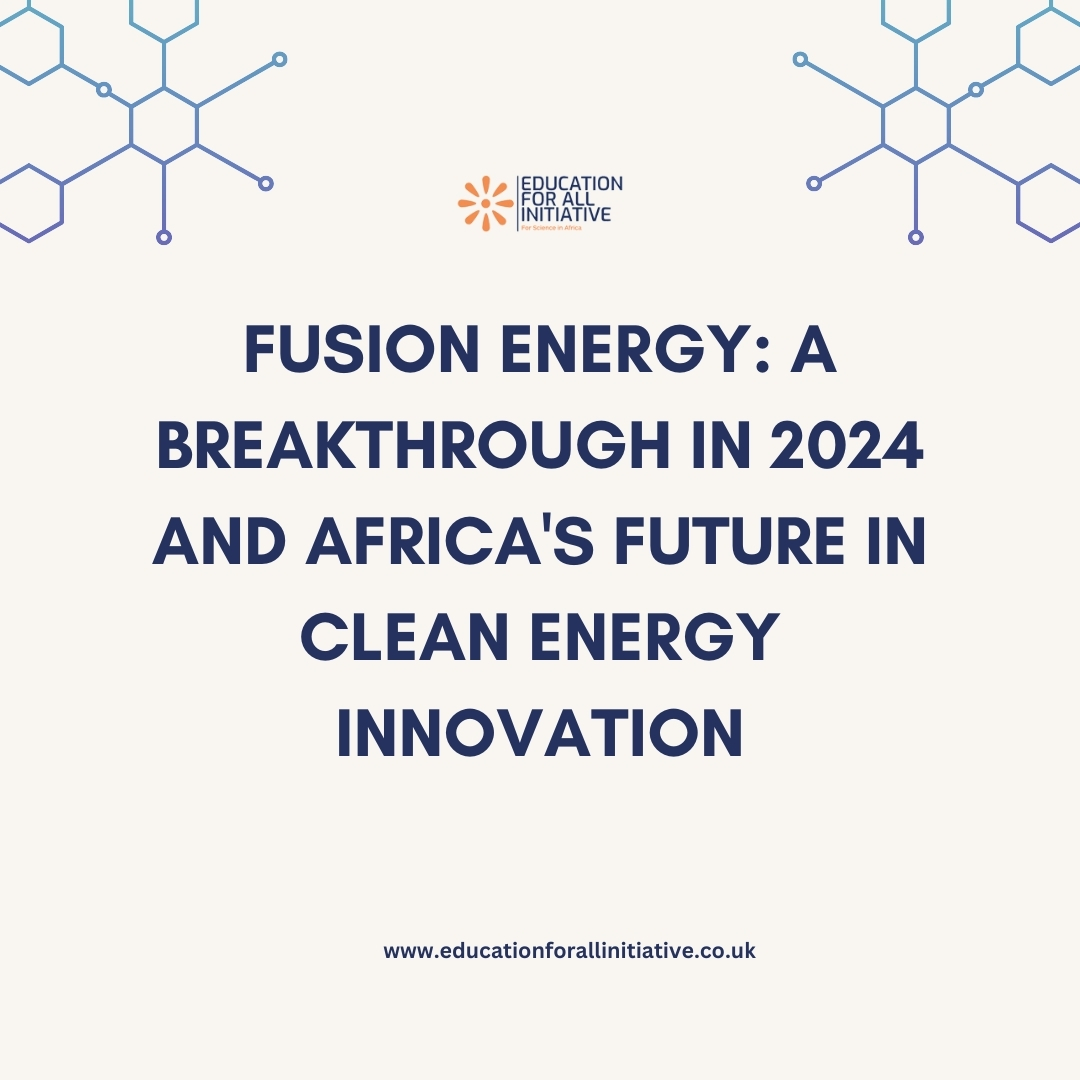In 2024, one of the most significant advancements in STEM was the continued progress toward making nuclear fusion a viable energy source. Fusion energy has long been pursued as a clean, safe, and virtually limitless energy solution, but only this year did researchers achieve sustained net-positive energy output, meaning more energy was produced than consumed in a fusion reaction.
Here are the full details of this innovation:
What is Nuclear Fusion?
Nuclear fusion is the process that powers the sun and other stars. It involves fusing two light atomic nuclei, typically hydrogen isotopes (deuterium and tritium), into a heavier nucleus, releasing vast amounts of energy. Unlike nuclear fission, which splits atoms and produces long-lived radioactive waste, fusion is much cleaner and safer, with its byproducts being mostly harmless helium.
The 2024 Breakthrough: Sustained Net-Positive Energy
For decades, the major challenge with nuclear fusion has been achieving “net-positive” energy, where the energy generated from the reaction exceeds the energy input needed to start and maintain the reaction. In 2024, scientists at the Lawrence Livermore National Laboratory (LLNL) in the United States made significant headlines when they were able to sustain this net-positive output for the longest duration in history. This success builds on earlier breakthroughs from 2022, where fusion reactions first produced more energy than they consumed, but only for very short periods.
In 2024, researchers were able to maintain this net-positive energy state for longer periods, proving that sustained fusion reactions can be achieved. The energy gain this year was over 1.5 times the energy input, marking a huge step forward in making fusion a reliable energy source.
Why This Breakthrough Matters
Clean Energy: Unlike fossil fuels, nuclear fusion doesn’t produce carbon emissions, making it an ideal solution to tackle climate change.
Abundant Resources: Fusion uses hydrogen, which is abundant in water, making fuel sources nearly limitless compared to finite fossil fuels.
Safety: Fusion reactors don’t have the risk of meltdowns, unlike nuclear fission reactors, and they produce far less radioactive waste.
Global Energy Crisis: With growing energy demands and environmental concerns, nuclear fusion holds the potential to provide a nearly infinite supply of energy.
Key Technologies Involved
Tokamaks and Magnetic Confinement: In nuclear fusion, controlling the plasma (a superheated gas where fusion reactions occur) is crucial. The 2024 breakthrough relied on tokamaks, doughnut-shaped devices that use powerful magnetic fields to contain and stabilize the plasma.
Inertial Confinement: In the 2024 experiments, scientists used lasers to heat and compress small hydrogen fuel pellets to extreme conditions, mimicking the conditions inside stars.
Advances in Plasma Physics: Innovations in plasma stabilization allowed the fusion reactions to continue longer, which was a crucial element of the 2024 achievement.
Future Implications
The 2024 breakthrough sets the stage for the development of fusion power plants within the next decade. By continuing to refine the technology, it is expected that fusion energy could start contributing to the global grid by the 2030s. This would dramatically reduce reliance on fossil fuels and help achieve global climate goals.
Africa’s Role in the Fusion Future
With its growing energy needs, Africa stands to benefit immensely from nuclear fusion once it becomes commercially viable. ECOSTEM AFRICA aims to inspire African students and researchers to engage in fields like plasma physics, materials science, and engineering—disciplines essential to fusion energy. By fostering STEM education, we ensure that Africa can play a key role in harnessing fusion technology to meet its future energy demands.*




